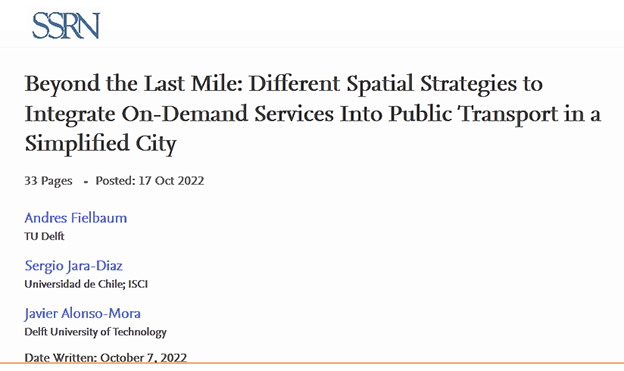Andres Fielbaum TU Delft
Sergio Jara-Diaz Universidad de Chile; ISCI
Javier Alonso-Mora Delft University of Technology
Abstract
Integrating on-demand services into public transport networks might be the best way to face the current situation in which these new technologies have increased congestion in most cities. When cooperating with on-demand services rather than competing, public transport would not risk losing users, and could attract some passengers from private modes thanks to an increased quality of service. This fact has motivated a growing literature discussing how to design such an integrated system. However, all of that research has imposed that on-demand mobility is to solve the so-called “last-mile problem”, serving only as a feeder that connects the exact origins/destinations with the traditional public transit network. As it induces a large amount of transfers and it precludes some scale-effects to be triggered, in this paper we challenge that imposition and investigate if this is the best spatial integration strategy. To do so, we study a simplified linear city in a morning peak situation, where we propose seven different lines structures, all of them combining a traditional fixed line with on-demand ride-pooling (ODRP): three direct structures, where ODRP can serve full trips, three semi-direct, where a single ODRP vehicle can serve the largest part of a trip, and a base case in which ODRP is restricted to the first and final legs only. Our results show that the base case is optimal only under very specific demand patterns, or when transfer penalties are disregarded. Our analytical approach reveals relevant operational aspects of such integrated systems: namely, that the base case can help increase directness (diminishing detours), and that ODRP can help shorten the routes of the fixed services to decrease operators’ costs.
